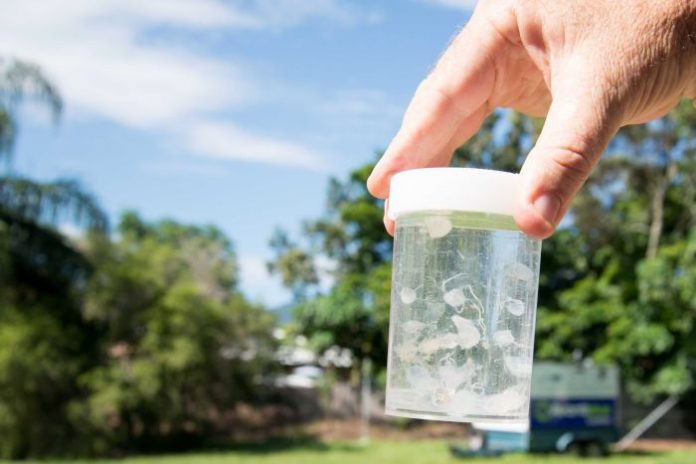Nineteen people have been taken to hospital with suspected Irukandji stings in Queensland so far this season — almost double the 10-year average, according to the Australian Marine Stinger Advisory Service (AMSAS).
The total includes eight people flown by rescue helicopter from Fraser Island off south-east Queensland in the past two weeks.
Associate Professor Jamie Seymour, from James Cook University, said calm and warm conditions at Fraser Island had made it a hot spot for the jellyfish.
“We’ve certainly seen this over the years, that the numbers of jellyfish that we’re getting down there seems to be increasing, and the length of time they’re down there seems to be increasing,” he said.
“If you look 10 to 12 years ago when we first found them down there, we only find them for a three- to four-week period.
“Now you’re getting stings and people stung over a two- to two-and-a-half-month period.”
‘Shaping up to be a pretty bad year’
AMSAS director Lisa Gershwin said it was “shaping up to be a pretty bad year”.
“You can’t really say there is a hot spot this year — they [Irukandji] have been up and down the coast,” she said.
Dr Lisa Gershwin holds an irukandji jellyfish in a jar.
“There have been clusters at Fraser Island, there have been clusters at the Whitsundays, there have been clusters in Cairns region, and stings in between.”
Dr Gershwin said the weather conditions were only part of the reason for the increase.
“Certainly it has been really hot, and I think that may have something to do with it,” she said.
“We have seen a lot of onshore winds, that certainly must have something to do with it.
“Also natural variability from year to year, so if you think flowers in your garden — some years they go gangbusters and other years you are practically begging them to bloom — that’s just the nature or nature, things have variability from year to year.
“The last couple of years have been less than we expected, so it may just be that nature is making up for it by more this year.”













